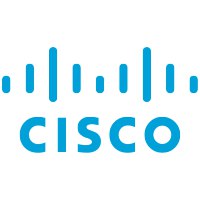N
Size: a a a
2021 February 15
да уже переделали
NK
Вам в институте рассказывали про CAP теорему? Вы тогда слушали или спали?
Если второе, то зря, ибо ничего в этом мире не меняется, какими бы красивыми словами не пытались назвать новые технологии.
https://blog.ipspace.net/2021/02/state-consistency-distributed-controllers.html
Если второе, то зря, ибо ничего в этом мире не меняется, какими бы красивыми словами не пытались назвать новые технологии.
https://blog.ipspace.net/2021/02/state-consistency-distributed-controllers.html
AV
нули отдаются при каждом опросе, или только при первом после перезагрузки?
При каждом запросе и это боль 😭
AV
вопрос к вендорам)
в модной телеметрии далеко не все есть, что может быть нужно
в модной телеметрии далеко не все есть, что может быть нужно
+100500
AV
Если говорят, что комплайнт, пусть покажут, где конкретно
Вот доберусь ща покажу
N
налетай вхлан с аес-256 поверх инета
N
N
@slepwin уже в прод впилил ?
N
Secure VXLAN EVPN Multi-Site using CloudSec is supported beginning with Cisco NX-OS Release 9.3(5).
Only Cisco Nexus 9300-FX2 platform switches support Secure VXLAN EVPN Multi-Site using CloudSec
AB
AV
их задача отвечать на такие вопросы в том числе
они мне топят за эту секцию
4. Discovery
The User-based Security Model requires that a discovery process
obtains sufficient information about other SNMP engines in order to
communicate with them. Discovery requires an non-authoritative SNMP
engine to learn the authoritative SNMP engine's snmpEngineID value
before communication may proceed. This may be accomplished by
generating a Request message with a securityLevel of noAuthNoPriv, a
msgUserName of zero-length, a msgAuthoritativeEngineID value of zero
length, and the varBindList left empty. The response to this message
will be a Report message containing the snmpEngineID of the
authoritative SNMP engine as the value of the
msgAuthoritativeEngineID field within the msgSecurityParameters
field. It contains a Report PDU with the usmStatsUnknownEngineIDs
counter in the varBindList.
If authenticated communication is required, then the discovery
process should also establish time synchronization with the
authoritative SNMP engine. This may be accomplished by sending an
authenticated Request message with the value of
msgAuthoritativeEngineID set to the newly learned snmpEngineID and
with the values of msgAuthoritativeEngineBoots and
msgAuthoritativeEngineTime set to zero. For an authenticated Request
message, a valid userName must be used in the msgUserName field. The
response to this authenticated message will be a Report message
containing the up to date values of the authoritative SNMP engine's
snmpEngineBoots and snmpEngineTime as the value of the
msgAuthoritativeEngineBoots and msgAuthoritativeEngineTime fields
respectively. It also contains the usmStatsNotInTimeWindows counter
in the varBindList of the Report PDU. The time synchronization then
happens automatically as part of the procedures in section 3.2 step
7b. See also section 2.3.N
у меня нет цисок кроме как на oob
вычеркивать из списка братишек?
AB
вычеркивать из списка братишек?
да
IS
у меня нет цисок кроме как на oob
так его
N
N
Configure BGP peers in the IPv4 unicast address family. Make sure that the IPv4 prefix is propagated with the tunnel community attribute that carries CloudSec keys.
O
Добрый день ! Посоветуйте плиз хороший вебинар по vxlan
AV
OV
Добрый день ! Посоветуйте плиз хороший вебинар по vxlan
лучше книжку и лучше несколько
N
OV
Добрый день ! Посоветуйте плиз хороший вебинар по vxlan
N
тут правда про каталисты 9000 а не нексусы, но думаю не страшно





